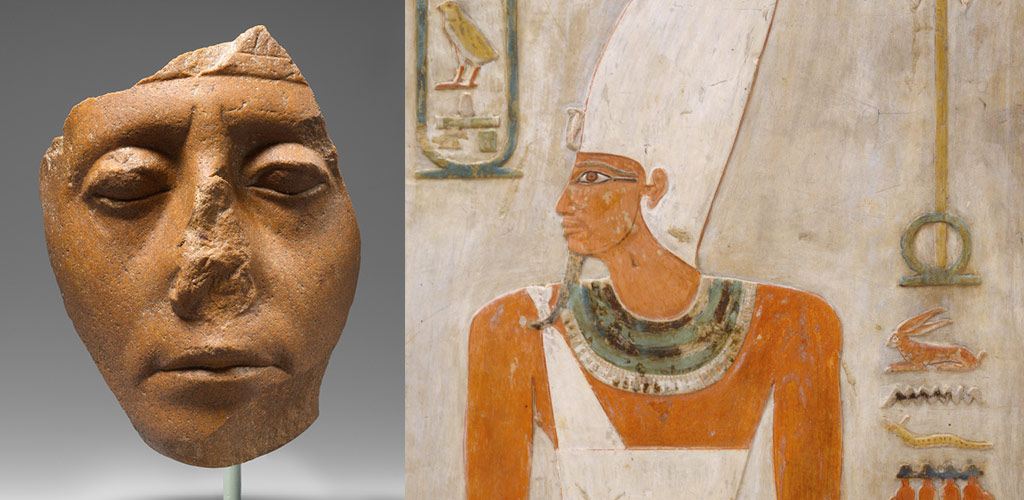I do believe it was Hatsheput, one of the few female Pharaohs.
Dating the Exodus.
First thing is to date when the Kings of Israel ruled. This was done during the 1800s and so far as I know, every scholar agrees with these dates. It came as a result from the 3rd greatest archaeological discovery of all time (#1 was King Tut's tomb): The palace and library of Ashurbanipal (King of Assyria), the display of this is in London and other related treasures are in Germany now.
Now that we know when the Kings of Israel ruled, we read the Bible's text of how many years previous to certain of their Kings the Exodus was. This of course depends on the credence given to the Old testament writings. But it comes out to about 1440 B.C. (according to these relative dates in the Bible).
-------------
Next we compare these with the accepted dates for the Pharaohs. Here is the list on the New York Metropolitan Museum:
We see 18th dynasty Tutmoses III who ruled for many decades. He became Pharaoh as a 2 year old child. His aunt, Hatsheput was made regent for the child (she held the real power). Shortly thereafter Hatsheput became a full Pharaoh and no longer just a regent.
Funerary Temple of Hatsheput still stands today, magnificent. This gigantic wonder has always been known, it endured very visible for thousands of years down through today.
You can see gigantic figures, at the entrance, including Hatsheput:
----------
Inside at the entrance:

List of Pharaohs near the correct date (New York Metropolitan Museum)
https://en.wikipedia.org/wiki/Cliff_tomb_of_Hatshepsut
------
A pharaoh that perished in the swamp or sea (the "Red Sea") chasing Moses and his people could probably not have been burred in a tomb. The only Pharaoh not found to be burred in a known tomb around 1440 BC is Hatsheput.
Thutmoses III was a great Pharaoh who reigned both before and decades after the year 1440. His letters and battles are recorded in clay and chiseled on monuments in Egypt and also in other nations nearby. It's hard to believe he died way before that, in around 1440 B.C. On the other hand, it's very easy to see why Hatsheput's record just stops with no explanation what happened to her in the Egyptian records (after such magnificent monuments early in her reign). She just suddenly disappears from the records but Thutmoses III continues on gloriously in Egyptian records.
Dating the Exodus.
First thing is to date when the Kings of Israel ruled. This was done during the 1800s and so far as I know, every scholar agrees with these dates. It came as a result from the 3rd greatest archaeological discovery of all time (#1 was King Tut's tomb): The palace and library of Ashurbanipal (King of Assyria), the display of this is in London and other related treasures are in Germany now.
Now that we know when the Kings of Israel ruled, we read the Bible's text of how many years previous to certain of their Kings the Exodus was. This of course depends on the credence given to the Old testament writings. But it comes out to about 1440 B.C. (according to these relative dates in the Bible).
-------------
Next we compare these with the accepted dates for the Pharaohs. Here is the list on the New York Metropolitan Museum:
We see 18th dynasty Tutmoses III who ruled for many decades. He became Pharaoh as a 2 year old child. His aunt, Hatsheput was made regent for the child (she held the real power). Shortly thereafter Hatsheput became a full Pharaoh and no longer just a regent.
Funerary Temple of Hatsheput still stands today, magnificent. This gigantic wonder has always been known, it endured very visible for thousands of years down through today.
You can see gigantic figures, at the entrance, including Hatsheput:
----------
Inside at the entrance:
List of Pharaohs near the correct date (New York Metropolitan Museum)
https://en.wikipedia.org/wiki/Cliff_tomb_of_Hatshepsut
------
A pharaoh that perished in the swamp or sea (the "Red Sea") chasing Moses and his people could probably not have been burred in a tomb. The only Pharaoh not found to be burred in a known tomb around 1440 BC is Hatsheput.
Thutmoses III was a great Pharaoh who reigned both before and decades after the year 1440. His letters and battles are recorded in clay and chiseled on monuments in Egypt and also in other nations nearby. It's hard to believe he died way before that, in around 1440 B.C. On the other hand, it's very easy to see why Hatsheput's record just stops with no explanation what happened to her in the Egyptian records (after such magnificent monuments early in her reign). She just suddenly disappears from the records but Thutmoses III continues on gloriously in Egyptian records.





Comment